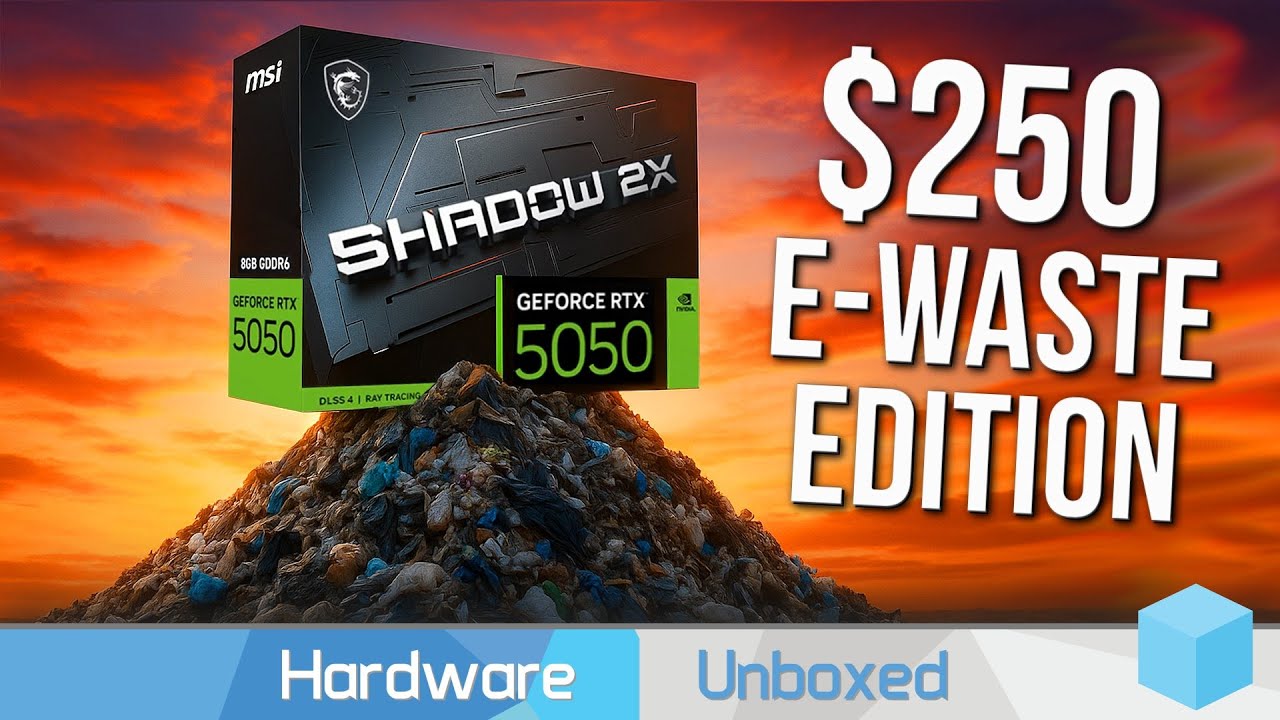The Nvidia RTX 5050 is a budget GPU with downgraded specs and unimpressive performance that falls behind similarly priced competitors like AMD’s Radeon RX 7600 and Intel’s ARC 9060 XT, offering poor value for its $250 price point. Despite supporting DLSS 4 and having low power consumption, the card’s noisy cooling, limited performance, and lack of future-proofing make it a less attractive choice compared to slightly more expensive or better-equipped alternatives.
Nvidia has once again released a new GeForce 50 series GPU, the RTX 5050, without any prior reviews or early access for reviewers, leaving consumers to purchase the card blindly. The launch was somewhat unusual, with no reviews available even on the release date and retail availability delayed by several days. The RTX 5050 is positioned as a budget option priced at $250 US, featuring a smaller die with fewer cores and downgraded GDDR6 memory compared to other Blackwell GPUs, which impacts its memory bandwidth and overall performance. Despite the lack of early reviews, the video’s host managed to acquire the card to provide an in-depth performance analysis.
Benchmark testing across various games at 1080p showed that the RTX 5050 delivers playable but unimpressive performance, often trailing behind similarly priced or slightly more expensive alternatives like AMD’s Radeon RX 7600 and Intel’s ARC 9060 XT. While it sometimes matches or slightly outperforms older or lower-tier GPUs, it consistently falls short compared to the 8 GB 9060 XT, which is about 20% more expensive but offers significantly better frame rates. The RTX 5050 also consumes less power than the 9060 XT, but this power efficiency comes at the cost of lower performance.
When evaluating value, the RTX 5050 disappoints further. Its cost per frame is barely improved compared to previous generation cards like the RX 7600 and is worse than the 8 GB RTX 5060 Ti and the 16 GB 960 XT, both of which offer better performance and longevity. At higher resolutions like 1440p, the performance gap widens, making the RTX 5050 an even less attractive option for gamers who want to future-proof their setup. The reviewer strongly recommends avoiding 8 GB GPUs in 2025 and instead saving for the more capable 16 GB models, which represent better long-term investments.
The physical design and cooling of the RTX 5050, exemplified by the MSI Shadow model tested, is basic and somewhat noisy under load despite the card’s relatively low power draw and temperatures. The card’s single PCIe power input and modest thermal profile are positives, but the cooling solution leaves much to be desired in terms of noise levels. On the feature side, the RTX 5050 supports DLSS 4, Nvidia’s latest upscaling technology, making it the lowest-priced GPU to do so. However, this advantage alone is not enough to justify the card’s poor value proposition.
In conclusion, the RTX 5050 is essentially a slower, cheaper alternative to the RTX 4060, but its price-performance ratio is unfavorable compared to other budget GPUs on the market. The reviewer advises potential buyers to either spend a bit more for the RTX 5060 or opt for AMD’s 960 XT 16 GB model for better performance and future-proofing. The RTX 5050’s low price point would need to drop significantly to become a worthwhile purchase. Until then, gamers looking for budget options should consider alternatives that offer better performance, value, and longevity.
